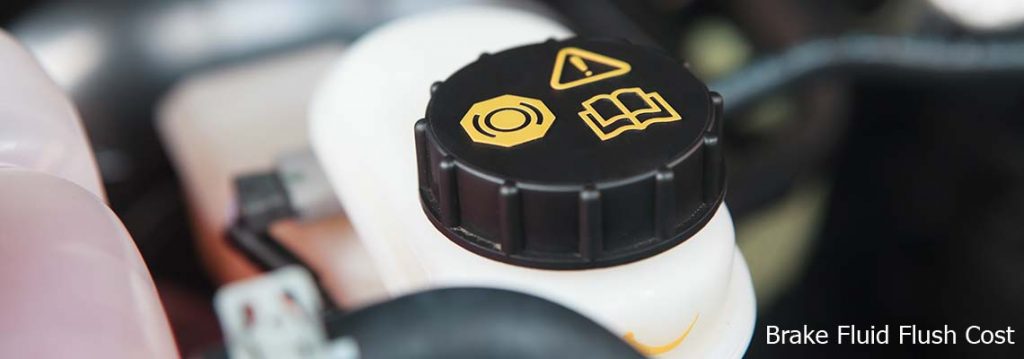How much does a Brake Fluid Flush Cost? Do you know? If you don’t know, would you love to know? If your answer is YES, then I have the right answer for you.

Brake Fluid Flush Cost
Have you heard of a Brake Fluid Flush? Do you know what it is and if really you need one? It is quite unfortunate that most car owners and drivers don’t think much in regards to the maintenance of their bakes.
What they do is that they wait until their brakes and pads fail and need to be replaced. And even if your brakes are well taken care of and you replace the pads and other components at the recommendation of your mechanic, you may still have to wonder if you really need to change your brake system flush fluid regularly.
Generally, the cost of brake fluid is around $100 and much of this amount goes towards the cost of labor
What Is A Brake Fluid Flush
Everyone wants to do what’s best for their cars and to keep them safe on the road as well as running for a very long time as possible. But what exactly is the purpose of the brake fluid flush and what does it even cost and whatever the cost is, is it worth the money?
the system of your brake has a lot of working parts. And typically, a car has disk brakes in the front and then either disc brakes or drum brakes in the back. You should also know that everything is connected by a system of hoses and tubes that helps link the brake at each wheel back to the master cylinder. The parking brake, power brake booster, and anti-lock system are all also part of the overall brake system.
Immediately you step on the brake pedal, a plunger then pushes against the master cylinder, which then forces brake fluid via the connected hoses to the brake at each of the wheels. On the disk brakes, fluid is forced into a caliper.
And this is where it presses against a piston that then squeezes the brake pads against the disk and forces the wheel to go slow or come to a complete stop. On drum brakes, the fluid is forced into the wheel cylinder and then pushes the brake shoes against the drum to stop the wheel.
However, in both cases, brake fluid plays a very important role in the overall brake system of your car.
How Does a Brake Fluid Flush Work
This is simple. It is very much possible to change your own brake fluid. However, a mechanic can do it quickly and thoroughly in the shop with a brake-flushing machine. But if you do decide to do it all by yourself, make sure to use high-quality brake fluid.
It is also important to know that outside air can contaminate brake fluid quickly, and in the process, cause water vapor to combine with the fluid. This contamination can result in damage to your entire brake system, so you need to be careful.
If however, you take your car to the shop, the technician first will locate the brake fluid reservoir and then remove all the old fluid before replacing it with new fluid. Your car will need to be jacked up and all four wheels removed in order to remove the old brake fluid from the brake valve. To flush the fluid effectively, tubing is connected to the brake valve on one of the ends with the other end emptying into a container to collect the fluid.
A second technician will then have to pump the brakes and then hold down the brake pedal while the other technician tries to crack open the valve. The old brake fluid should then empty into the container almost immediately. The old brake fluid is dark color in color, whereas the new fluid has a yellow tint on the other hand.
The “flushing” process is then repeated until the container shows that the newly introduced, clean fluid is reaching the brakes. The process is then continued on all four brakes before the wheels are put back on the car. A road test can then be conducted in order to make sure the brakes are working optimally.



